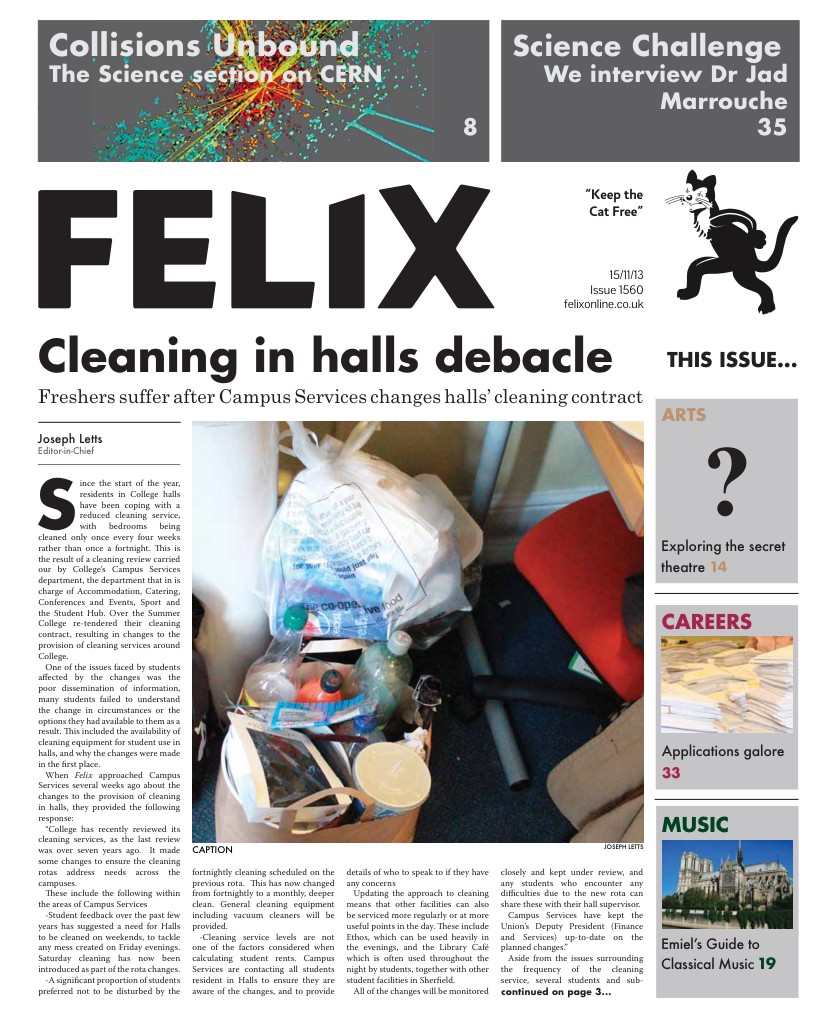Collisions unbound: what is the future for CERN?
Currently, experiments at CERN have halted, giving time for maintenance work and a renovation of its equipment to take place. It is set to continue its experiments in 2015, where the energy intensity of its collisions will be increase from 4 trillion electron-volts to 6.5.
Currently, experiments at CERN have halted, giving time for maintenance work and a renovation of its equipment to take place. It is set to continue its experiments in 2015, where the energy intensity of its collisions will be increase from 4 trillion electron-volts to 6.5. The excitement caused by the Higgs-like particle discovery has seemed to overshadow the rest of the achievements that CERN have been able to produce. A host of theoretical particles were first seen in collisions tested by the LHC, which was installed in 2008. These have enabled theories to be put to the test and have confirmed our ideas about the universe, the Standard Model, which predicts the interactions of fundamental particles. The Higgs was first announced to be discovered earlier this year as separate, repeatable experiments gave rise to complementary results. So, what direction does CERN to take its’ experiments in 2015? While the experiments showed that a particle was observed with a mass similar to what was predicted, there are other characteristics of twhe particle – spin, parity, decays – could change our understanding of the Standard Model, if what we thought was the Higgs was actually slightly different. So far, the results from the different detectors, LHC, ATLAS, CMS, have been consistent with what we have predicted. If, in the pursuit of these unanswered questions, we find new particles, we would have to revise our position. More experiments could provide evidence for the Standard Model, or super-symmetry, or even lead to the formulation of a new paradigm. Then there are those areas of physics that we are still unable to account for. Where does gravity fit into the Standard Model? Why is there so much more matter than anti-matter? What about dark energy? Currently, we have only been able to account for 5% of the observed mass in the universe. The rest of this is made up of dark energy and matter – dark because we have not been able to see it yet. Conversely, the ALICE experiment has been trying to replicate conditions of the early universe. In the instant after the big bang, there was a lot of energy and heat about. Many different types of particle popped into and out of existence before they could even interact with much else. Try to recreate these conditions understandably takes a lot of energy, but if we were able to find what made up the primordial soup of particles, we would be able to see how the particles changed and evolved over time, leading to where we are today. The Collider exhibit at the Science Museum displays the journey undertaken on quest for the Higgs boson. However, rather than being the end of a long search, we are in reality still taking the first few steps towards greater understanding.






